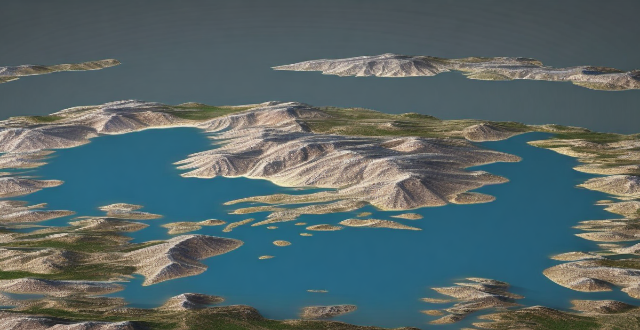A climate model is a computational representation of the interactions between various components of the climate system, used by scientists to simulate and understand the behavior of the Earth's climate. It involves data collection, mathematical equations, numerical methods, computational simulation, and model evaluation and validation. There are several types of climate models, including atmospheric models, ocean models, coupled models, ice sheet models, and ecosystem models.

What is a Climate Model?
A climate model is a computational representation of the interactions between various components of the climate system. It is a mathematical tool used by scientists to simulate and understand the behavior of the Earth's climate, both past, present, and future. These models are designed to predict how the climate will change over time in response to natural processes and human activities.
How Does a Climate Model Work?
Climate models operate on the principles of physics, chemistry, and biology to simulate the complex interactions within the Earth's climate system. They typically involve the following steps:
1. Data Collection
The first step in creating a climate model is to collect data about the Earth's climate system. This includes information about atmospheric conditions, ocean currents, land surface characteristics, and more. Scientists use various techniques such as satellite observations, weather balloons, and ground-based measurements to gather this data.
2. Mathematical Equations
Once the data is collected, scientists develop mathematical equations that describe the physical processes occurring within the climate system. These equations represent the relationships between different variables, such as temperature, pressure, humidity, and wind speed. The equations are based on well-established laws of physics, including Newton's laws of motion, the conservation of energy, and the laws of thermodynamics.
3. Numerical Methods
To solve these mathematical equations, scientists use numerical methods. These methods involve breaking down the continuous processes into discrete steps and solving them iteratively over time. This allows them to simulate the behavior of the climate system over long periods of time.
4. Computational Simulation
After developing the equations and numerical methods, scientists run computer simulations using powerful supercomputers. These simulations can take weeks or even months to complete due to the complexity of the calculations involved. The output from these simulations provides insights into how the climate system behaves under different scenarios.
5. Model Evaluation and Validation
Finally, scientists evaluate and validate their climate models by comparing their predictions with actual observations from historical climate records. They also test their models against known events, such as volcanic eruptions or changes in solar radiation, to ensure accuracy and reliability.
Types of Climate Models
There are several types of climate models, each designed to study specific aspects of the Earth's climate system. Some common types include:
- Atmospheric Models: These models focus on understanding the dynamics of the atmosphere, including air pressure, temperature, humidity, and wind patterns.
- Ocean Models: These models simulate the movement and properties of ocean waters, including temperature, salinity, and currents.
- Coupled Models: These models combine both atmospheric and ocean models to study their interactions and feedback mechanisms.
- Ice Sheet Models: These models simulate the behavior of ice sheets and glaciers in response to changing temperatures and sea levels.
- Ecosystem Models: These models examine the impacts of climate change on ecosystems, including vegetation patterns and wildlife habitats.
In conclusion, climate models are essential tools for understanding and predicting changes in our planet's climate. By incorporating vast amounts of data and sophisticated mathematical equations, they provide valuable insights into the complex interactions within the Earth's climate system.